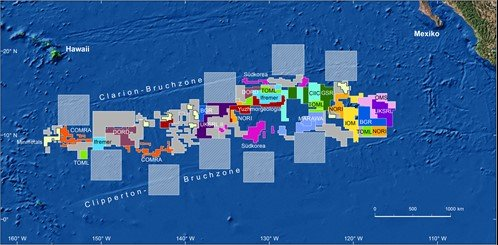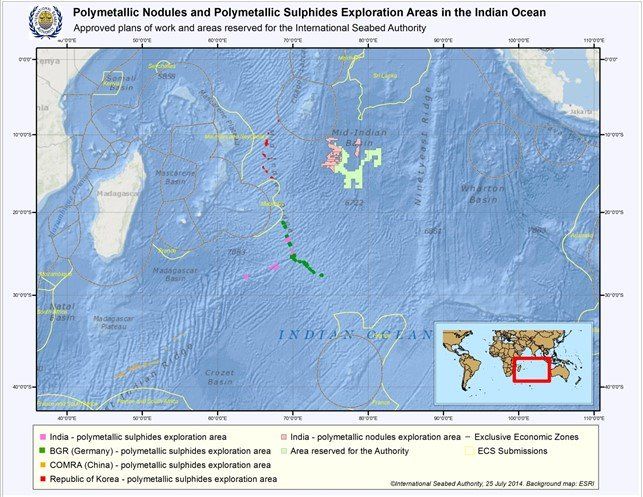Ressources
Valuable resources on the seabed
The International Seabed Authority (ISA) is responsible for regulating and controlling the exploration and exploitation of seabed resources in areas outside the Exclusive Economic Zones of Coastal States (EEZ). The legal basis is the 1982 United Nations Convention on the Law of the Sea (UNCLOS) and its implementing agreement (both in force since 1994). The ISA, based in Kingston, Jamaica, is an autonomous intergovernmental organization of the United Nations with 168 member states. To date, the ISA has granted 30 licenses in the form of contracts for the prospection and exploration of the following three types of mineral deposits with high metal contents and quantities:
- Manganese nodules are polymetallic ores found on the seabed in water depths of approximately 4,000 to 6,000 meters.
- Massive sulphides (SMS) are ores with a polymetallic content of valuable substances, which usually occur in the area of hydrothermal sources ("black smokers") at water depths of approximately 1,000 to 4,000 meters. The mineral content of the ores is determined by the amount of minerals in the form of sulphides.
- Polymetallic cobalt-rich ferromanganese crusts are ores that mainly contain cobalt, copper, manganese and rare earths. They are often found on the slopes and on submarine mountains in water depths of 1,000 to 3,000 meters.
Deep-sea mining in national waters subject to local jurisdiction
Marine ores are also mined in the 200 nautical-mile zones of coastal states under national jurisdiction (Exclusive Economic Zones - EEZs), for example on extensive continental shelves or, in the Polynesian island states, on deep seafloors. Companies seeking minerals here do not have to wait for ISA legislation, as coastal state governments can regulate deep-sea mining under their own jurisdiction. Exploration and mining licenses are already a reality. Diamonds are mined offshore of Namibia, phosphorites offshore of Africa and New Zealand and soaps (secondary mineral accumulations in sediments) are mined offshore of New Zealand.
In September 2017, Japan carried out the world's first mining test of massive sulphides in about 1,600 m water depth offshore the island of Okinawa. The Japanese Ministry of Economics, Trade and Industry (METI) and the Japan Oil, Gas and Metals National Corporation (JOGMEC) have successfully carried out this pilot mining test.




